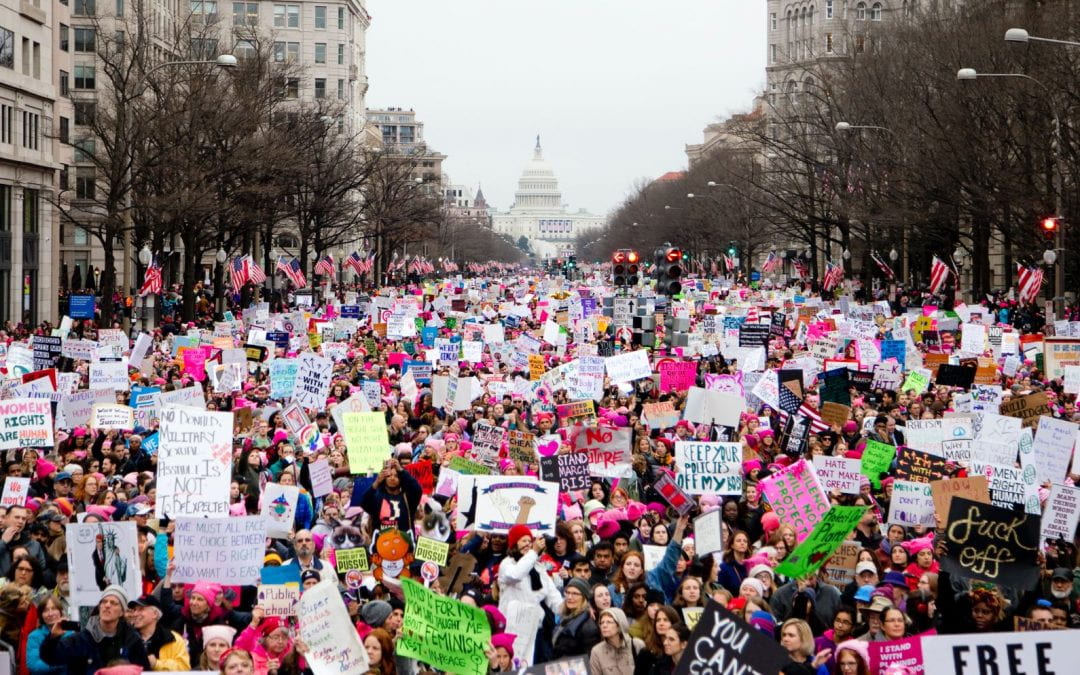By Alison Goldsworthy
In the past 20 years, hostility – fomented in a dislike and distrust of different groups – has dramatically increased and extended to many aspects of American life.
Officer Eugene Goodman, an Iraq War veteran turned police officer, was on duty at the Capitol building on 6 January 2021. As pro-Trump rioters made their way through the building, Goodman, who was guarding a corridor and stairs that led to the Senate Chamber, where senators were holed up, faced a choice. Outnumbered, how was he to face down this mob chanting “U-S-A” and “Where they countin’ the votes?”
His answer was to use himself as bait to lure the protestors to a different floor where he was able to receive backup. Goodman was Black. The rioters, some of whom carried the confederate flag, were all white.
In the past two decades, hostility in American politics has shot up. It is not always based on ideological positions but instead fomented in a dislike and distrust of different groups, a phenomenon known as ‘affective polarisation’.
This conflict has extended to many parts of American lives. You are more likely to get a child vaccinated if the person you voted for was elected president. The primary factor behind choosing a flatmate is the political preference they hold. Republicans were less likely to take up new health insurance provided in the Affordable Care Act if government involvement was hinted at in the exchange they purchased from.
This extension doesn’t always have to lead to violence. But it does make it more likely. Soon-to-be ex-president Trump played into it. In a prescient piece of research, academics Lilliana Mason and Nathan Kalmoe wanted to establish if a polarised environment would increase the likelihood of violence – or as they term it, “lethal partisanship”. They found that among the 10-15% of the population already disposed to violence, it did. While a small percentage, this equates to many millions of Americans.
Pushing further, Kalmoe and Mason established that, for some, support for violence rose again in an environment where they believed they were likely to win an election or had been cheated out of it. After all, winners rarely turn to violence – they have won.
This is why Trump’s absurd claims about vote-rigging, and refusal to accept defeat were so toxic – and why the Republican Party’s toleration, up until the rioters breached the building, chipped away at the norms that safeguard democracy. It’s why so many political scientists have long raised concerns about the democratic backsliding in the US.
But what next for President-elect Joe Biden? Divides do not suddenly dissipate, especially once they have reached the level witnessed in America. Scanning history, the rest of the world can induce two reactions, a deep breath and crumbs of hope.
Yes, the US is divided into two political tribes. But there is a large exhausted majority looking for a different way forwards. Other countries have exhibited high levels of affective polarisation; Greece and Portugal, to name two, saw protests on the streets in 2010 and 2013 respectively, with tear gas deployed by police against protestors. The triggers in both nations included the effects of the 2008 financial crash and rising unemployment. But peaceful elections have subsequently been held in both countries. Affective polarisation levels have receded.
Biden will need to walk a careful path to reach that exhausted majority. Affective polarisation can often take root subconsciously, making it harder to reverse. The media environment in the US is especially fragmented with talk radio, in which a presenter encourages listeners to phone in to give their opinions on topical issues, playing a particularly fomenting role. Social media can reinforce positions and make it harder for people to change their mind. It is tricky to overcome a situation in which identities are aligning in a manner that leads people to automatically believe that others are bad.
The violence in the Capitol earlier this month was not the first time the building has witnessed physical hostility. Between 1830 and 1860, there were 125 incidents of violence recorded on the floor of the US Congress – including stabbings, canings and the pulling of pistols. In 1861 America descended into Civil War.
There is no guarantee history will repeat itself. But President-elect Biden will need the support of many other political actors, from the Republican Party to party donors who helped foment the current situation, to unwind polarisation.
The determined yet nearly ghostly look in the eyes of Vice-president Pence as he oversaw the vote to certify Biden as president showed there could be a glimmer of hope some may move away from Trump. Yet, Republicans such as Mitt Romney and election official Aaron Van Langevelde continue to be sidelined by their own party for speaking truth to power.
Uncertainty and a widening gap between rich and poor are also closely related to increasing our ‘groupishness’. It seems likely that the effects of COVID-19, too, are set to increase. That makes it more likely that the last line of defence may indeed again come down to people like Officer Eugene Goodman.
This article was originally published on openDemocracy.net and was republished under a Creative Commons Licence. If you enjoyed this article, visit openDemocracy.net for more.
Alison Goldsworthy is the CEO of The Depolarization Project and an advisor to the Conflict and Polarization Lab at Stanford University.
Disclaimer: The ideas expressed in this article reflect the author’s views and not necessarily the views of The Big Q.
You might also like:

